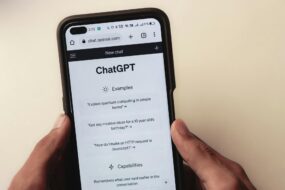
Humanizing AI Content
To effectively communicate with your audience, humanizing AI-generated content is crucial. This process involves integrating emotional intelligence into the writing, making the content more relatable and engaging.
Understanding Emotional Intelligence and AI Content
Emotional intelligence (EI) refers to the ability to understand and manage one’s own emotions while recognizing and influencing the feelings of others. Psychologist Daniel Goleman identified five key components of EI, which are essential in crafting messages that resonate with your audience (Sendsteps). When you apply these principles to AI content, you bridge the gap between human emotions and machine-generated text.
For example, consider how emotional intelligence can enhance your writing:
| EI Component | Description | Impact on AI Content |
|---|---|---|
| Self-awareness | Understanding your own emotions | Helps in expressing genuine feelings |
| Self-regulation | Managing emotions effectively | Aids in maintaining tone and clarity |
| Motivation | Harnessing emotions to achieve goals | Inspires engaging and persuasive content |
| Empathy | Recognizing emotions in others | Allows for writing that resonates with the audience |
| Social skills | Managing relationships and building networks | Enhances relatability and connection with the reader |
By incorporating these elements, you can create AI-generated content that feels more personal and impactful.
Importance of Emotional Intelligence in AI-Generated Content
Integrating emotional intelligence into AI-generated content is vital for several reasons. It enhances the relatability and memorability of your message, making it more effective in engaging your audience. AI has limitations in understanding and conveying emotions, which can lead to content that feels flat or impersonal. By infusing EI, you can humanize the content, ensuring it aligns with the emotional needs of your audience.
One practical approach is to balance automation with a human touch. This involves leveraging AI tools for generating text while infusing emotional cues, storytelling techniques, and visuals. By doing so, you ensure that your presentation or writing not only conveys information but also resonates deeply with your audience (Sendsteps).
For more insights on how to identify AI-generated text and tools available, check out our article on what app detects ai writing?. Additionally, understanding how to spot ai cheats can enhance your writing approach, making it more effective and trustworthy.
Detecting AI Content
As you dive deeper into the realm of AI-generated content, understanding how to detect it becomes crucial. This section addresses the challenges in identifying AI writing and explores various tools that can aid in this process.
Challenges in Detecting AI Writing
Detecting AI writing isn’t always straightforward. Here are some common challenges:
| Challenge | Description |
|---|---|
| Lack of Distinctiveness | AI-generated content often lacks unique expressions or styles, making it harder to differentiate from human-written text. |
| Complexity of Language | Advanced AI models can craft sentences that closely mimic human writing patterns, complicating detection efforts. |
| Evolving Technology | AI tools are constantly improving, making previously identified markers of AI writing less reliable over time. |
| Contextual Understanding | AI may produce valid content without a full understanding of context, leading to subtle inaccuracies that can go unnoticed. |
These challenges can hinder your ability to efficiently identify AI-created text, making the use of detection tools essential.
Tools for Detecting AI-Generated Text
Fortunately, various tools can help you identify AI-generated writing. Here’s a list of some popular options:
| Tool Name | Description |
|---|---|
| AI Busted | Offers an AI Humanizer tool that makes AI text more appealing and human-like, complicating detection by AI systems. Check out what app detects ai writing? for more details. |
| ZeroGPT | Evaluates text to determine if it’s generated by AI and provides a percentage score related to its likelihood of being AI-written. Explore if is zerogpt a good ai detector? for user reviews. |
| Undetectable AI | Focuses on creating text that AI detection tools may not identify as generated content. Find out if is undetectable ai free? for accessibility options. |
| Grammarly | While primarily a writing assistant, it can flag unusual patterns that may suggest AI generation. Consider how to use it to improve your text through humanization techniques. |
| Turnitin | Traditionally used to check for plagiarism, it has features designed to spot AI-generated writing in academic settings. For further insights, refer to how to spot ai cheats?. |
Using these tools can significantly enhance your ability to identify AI writing while ensuring that the content maintains a human touch. Fostering an understanding of these resources empowers you to create and critique content effectively, ultimately achieving your goal of producing authentic, engaging material.




